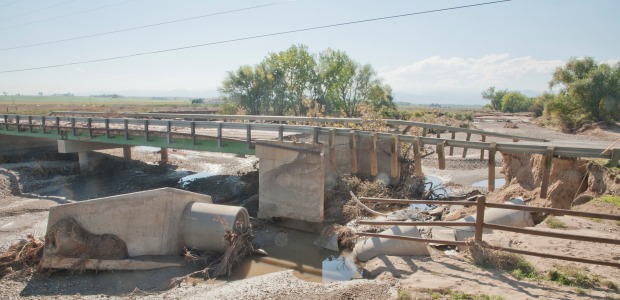
Big Flood Insurance Battle Heating Up
The insurers and environmental groups in SmarterSafer.org are fighting to keep the Biggert-Waters Act of 2012 implementation on track as many members of Congress push for delays.
Near-unanimous passage of the Biggert-Waters Act of 2012 appeared to place the National Flood Insurance Program on a firm financial footing, with grandfathered and subsidized insurance rates raised, repetitive payments no longer going to housing that floods again and again, and taxpayers no longer on the hook for a $24 billion debt. But the pressure to delay the law’s implementation by FEMA is growing, as shown by the newly introduced Homeowner Flood Insurance Affordability Act (H.R. 3370), which would delay it by four years and require FEMA to complete an affordability study. Ninety-five members of the U.S. House of Representatives are listed as sponsors of the bill, which has a companion measure in the Senate.
"The Biggert-Waters legislation was designed to address a $24 billion deficit and ensure millions of American homeowners could continue to purchase flood insurance. But FEMA's poor implementation, inaccurate mapping, and incomplete data has led to unreasonable and unimaginable increases in premiums. From the moment I learned of the unintended consequences of the Biggert-Waters legislation, I have made clear that I would lead the effort to resolve the problems that have resulted," U.S. Rep. Maxine Waters, D-Calif., ranking member of the House Financial Services Committee, said recently. "Today, we have reached a bipartisan, bicameral agreement on the best way to repair the National Flood Insurance Program. This legislation would ensure that FEMA undertakes program changes in a way that will not cause harm, by delaying implementation until it provides Congress the facts on how rate increases will affect homeowners. It will also give us the information we need to go through the program piece by piece and fix any outstanding affordability issues."
In fact, rate shock was planned: The law as written and enacted requires owners of non-primary residences in Special Flood Hazard Areas who have been paying subsidized rates to see 25 percent annual premium increases until their rates reflect the properties' true risk. The same is true for non-residential properties and severe or repetitive loss properties in Special Flood Hazard Areas, who began seeing the higher rates Oct. 1, 2013.
Both New York City Mayor Michael Bloomberg and Florida Gov. Rick Scott have called for the implementation to be delayed. On the other side, fighting to keep the reforms on track, is an organization named SmarterSafer.org. It includes environmental groups, taxpayer advocates, insurers, and housing and mitigation organizations. The organization says the Senate legislation "would essentially gut badly needed reforms to the NFIP and put its financial stability in danger. There are many common-sense measures we can take to make these reforms work better for those with real needs while continuing to shore up the finances of the NFIP. Delaying would be a mistake and should be avoided at all costs."
The organization recommends slowing down rate increases for properties affected by new floodplain maps and home sales, as well as creating a means-tested assistance program to aid people with paying premiums and making flood mitigation renovations. "Unlike delays, these changes would ensure that taxpayers no longer have to subsidize those who do not need it, such as owners of second homes, while helping those who may need some time to adjust to a higher rate. The measures would also incentivize activities to reduce flood insurance costs in the long term, like mitigation and better regulation of levees," according to SmarterSafer.org's Oct. 29 statement.
Steve Ellis, vice president of SmarterSafer.org member Taxpayers for Common Sense, testified Sept. 18 before a Senate Banking Committee subcommittee that one property in Wilkinson, Miss., "has flooded 34 times since 1978 and received payments worth nearly 10 times the home's $70,000 value," and a Houston property has received $1.6 million worth of claims for a house worth $116.000.
Testifying at the same hearing, FEMA Administrator Craig Fugate defended the law, saying FEMA estimates subsidized policy holders should be paying $1.5 billion more than they do now. About 1.1 million of the 5.6 million policy holders pay subsidized rates, he said.